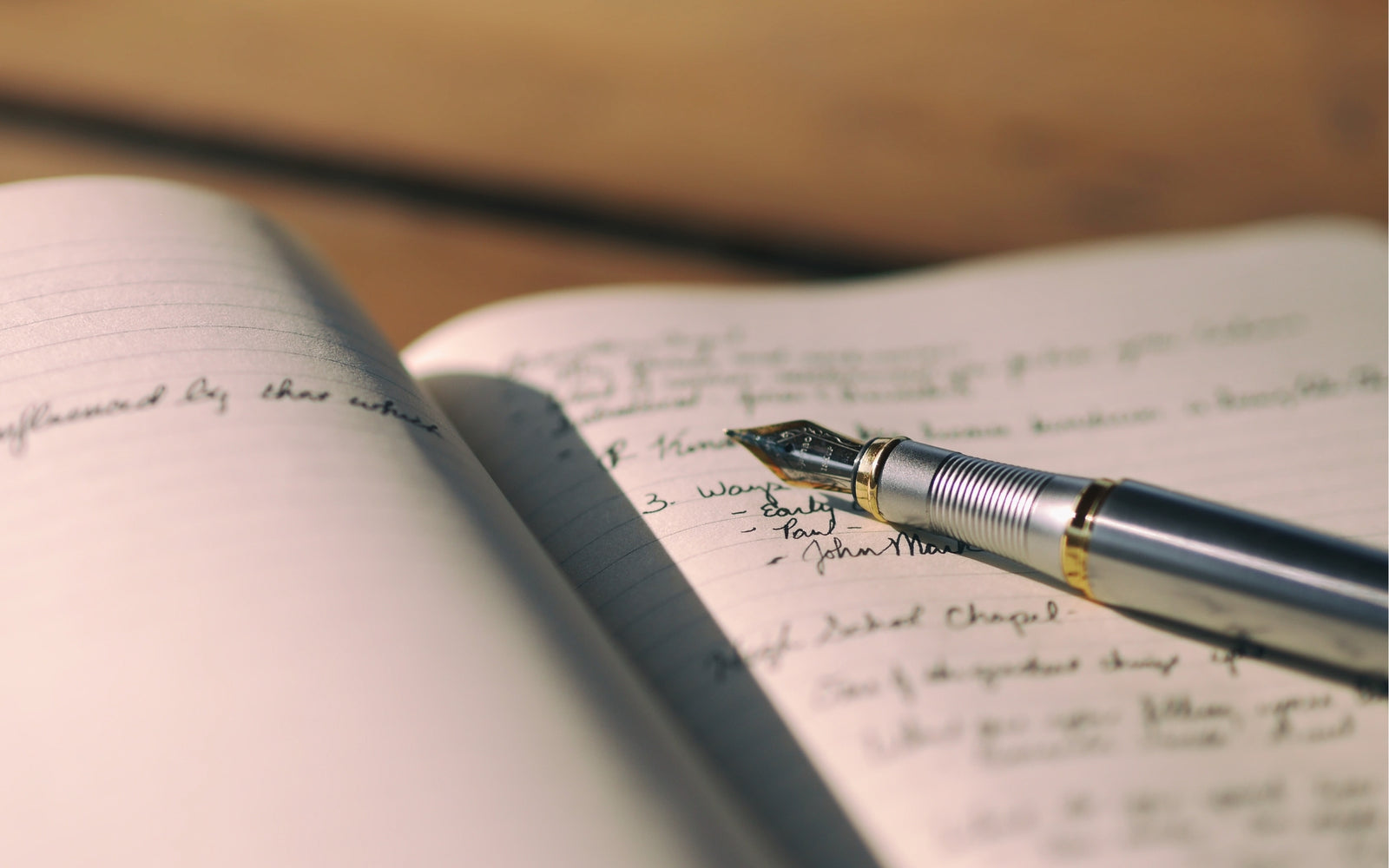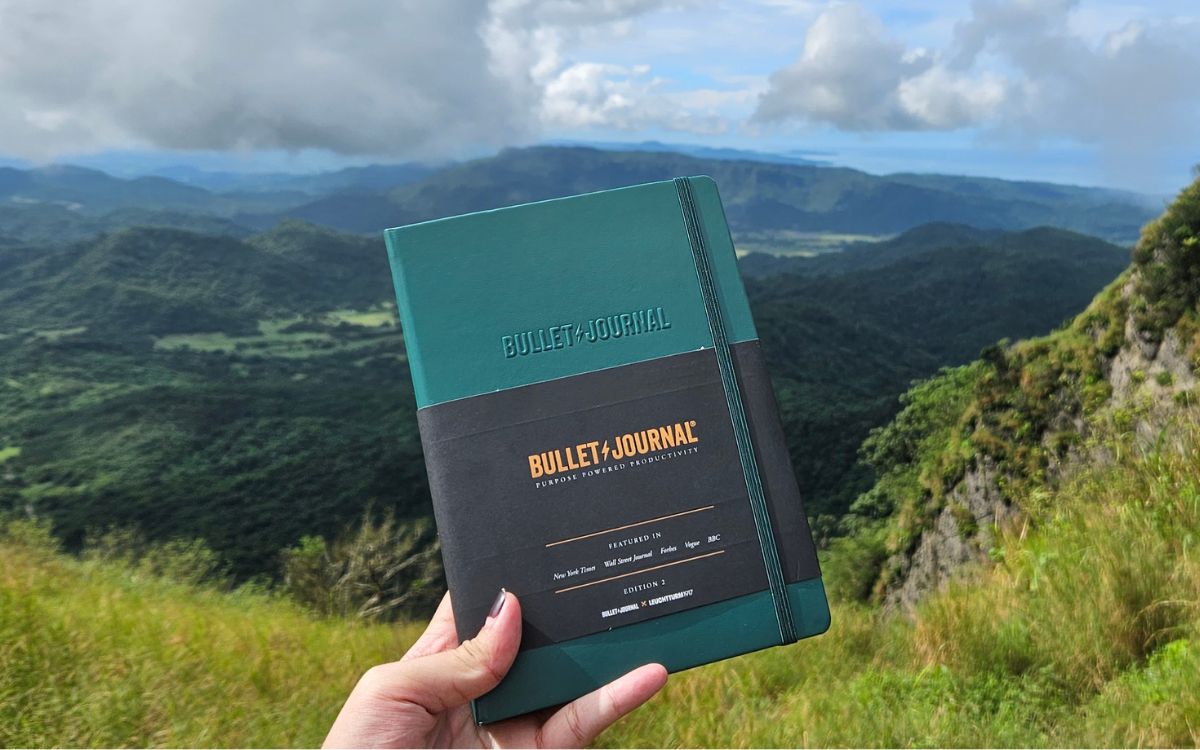Journaling has seen a major resurgence in recent years. Studies keep coming out about not only the mental but physical health benefits of journaling. That said, the idea of starting a journal can seem daunting. It looks like it takes a lot of time, requires artistic talent, tons of pens, and is emotionally draining.
True, it can be all those things, but it doesn’t have to be. It can be much easier. Bullet Journals don’t have to be artistic or pretty, they just have to work for you. As one Bullet Journalist puts it, “If you want to start but feel intimidated by the beautiful pictures all over Instagram, remember that the point is to organize your life.”
We've been asked whether someone can start a Bullet Journal even if they aren't artistic, have beautiful handwriting, or are very organized by nature. The answer is yes. There's no prerequisite of skill to start Bullet Journaling.
If you want to learn how to Bullet Journal in a simple way, here's the easiest way to get started with the Bullet Journal method.
What to write about in your Bullet Journal
Let’s begin by briefly discussing what you should journal about before we talk about how to journal. You can journal about anything, but it’s important to have an intention to anchor your practice around.
Ryder made a video about this that you can check out here, but the short version is before you start journaling, ask yourself: What do you want to get out of journaling? What makes you curious about this practice? Clarity, organization, calmness, being less forgetful, better mental health, self-awareness? There are no wrong answers.
Take a moment to think about it. See if you can write it down in one or two sentences. This intention will provide the lens and the purpose for your journaling practice. Without a purpose, your practice can feel meaningless. Don’t overthink it, you can always change it later as you start to get the hang of it.
Next, let's take a look at how you can capture your thoughts using a technique I invented called rapid logging.
How to Rapid Log with the Bullet Journal method

Let me ask you a question. What was the last meaningful thing somebody said to you? Or something a bit easier, what did you have for lunch 2 days ago? If you can’t remember, you’re not alone. It’s clear that we can’t rely on memory to accurately capture our experiences, so we can try to use our Bullet Journal to help us remember key moments of our day.
Your intention will help you frame certain experiences. Experiences, whether they’re good or bad, are lessons. Writing down our thoughts, feelings and experiences, gives us the opportunity to study them and understand the lesson they’re here to teach us.
The problem is that our lives are infinitely complex and there are countless things to keep track of. Rapid logging is a way of taking shorthand notes that let you see at a glance how important a task is and how it fits in the larger context of your time. It is the language in which the Bullet Journal method is written. Rapid logging tames chaos by categorizing your thoughts into one of three categories of thoughts:
- Things you need to do - your tasks
- Things you experience - events.
- Things you don’t want to forget - notes.
Each category has its own symbol to help upgrade a basic bulleted list into one with context and function. These symbols will allow you to quickly capture and contextualize your thoughts in real time, during the day. It will also help you scan your page edges and quickly find what you’re looking for later on.
Let’s cover the basics of what you can put in your Bullet Journal.
Tasks
The Task bullet is represented as a dot, making it faster, cleaner and more flexible to use than a traditional checkbox. Our tasks have different states, they begin, they pause, they end, they move. That’s another reason why we use a dot, it can be easily transformed to reflect various states of the task.
An open task starts as a dot. Once completed, it’s turned into an “x”. If you need to move a task elsewhere in your notebook, the dot turns into an arrow pointing the direction you moved the item. If a task is no longer needed, you strike it out.
If a task requires multiple steps to complete, it can be laid out as a master task, with any subtasks nested beneath it. This way you can quickly break down a task into smaller, more manageable steps. This also turns that task into a little progress roadmap as you make your way through.
Events
Events are represented by the “O” bullet. These are experience related entries. You can use these to write down an event ahead of time, but most they are written after they happen.
For example if you want to write down something that you already did, it would not be a task, it would be an event. This can help you keep track of your actions that you didn’t plan to do ahead of time.
When logging experiences, we want to keep it simple. Rather than trying to capture the emotional complexity of an experience, simply write down what you observe. “Last day at work”, “Big fight today”, “Closed on the house”.
We do this not because we’re robots, we do this because it’s faster and easier, which increases the likelihood that we will actually write it down. This helps keep our record more complete and accurate over the long term.
With that said, if you want to unpack an experience through longer form journaling, I recommend doing it in the next day or two while it’s still fresh in your mind. The other option is to pair the Event bullet with the final bullet type in your Bullet Journal: Notes
Notes
Notes are represented with a dash. Notes can be facts, ideas, thoughts, observations, and feelings in your Bullet Journal. You can think of it as your diary, commonplace journal, and brain dump. The purpose of the Note bullet is to capture noteworthy information that isn’t actionable. This bullet lends itself well to classes, meetings, as well as emotions.
Notes can also be nested under Tasks or Events to capture important details. This is a quick way to add color and context to your entries like the your biggest takeaways, or any strong feelings that are present.
Big or small, everything we do, everything we experience, provokes an emotional response. The Notes bullet lets us quickly capture those responses. Over time, a record of the response can help us correlate how we feel with what we do and what we experience.
As you can see, there is a surprising amount of information that becomes available to us by triangulating these three types of thought. Of course there are more types of thoughts, and more types of states. That’s what signifiers are for.
Signifiers
Signifiers can be used to provide additional context at a glance. These are placed to the left of the bullets, making them easy to notice. Two examples of signifiers that I use are an asterisk for priority tasks, and an exclamation mark for inspiration or ideas. This way, I can quickly find what’s most important to me while scanning my pages.
Lets put in all together:
- Set an intention for your journaling practice. This will help you frame your thoughts
- Write down the things you need to do, the things you don’t want to forget, and things you want to experience as short Bullets. This will help you keep your entries short and categorized.
That’s it. Simply by implementing these two steps, you’ve created the foundation of a powerful journaling practice. You now have tools to quickly offload all of the information you’re bombarded with throughout the day. You’re left with a clear categorized list of prioritized thoughts.
Over time this will create a very accurate record of what worked, what didn’t. What you want more of, what you want less. Cultivating this type of self awareness through journaling will allow you to make choices that are informed by your lived experience.
This is just the tip of the iceberg. If you would like to learn more about Bullet Journaling, I invite you to check out our Basics and Beyond course where we dive much deeper into Rapid Logging, Journaling, Daily, Weekly, Monthly Logs, Rituals, and more.
Happy Bullet Journaling.






Soha Naiman
April 19, 2024
Thanks, I have ADHD and your method helps me a lot. But I need to know how can I track my habits.